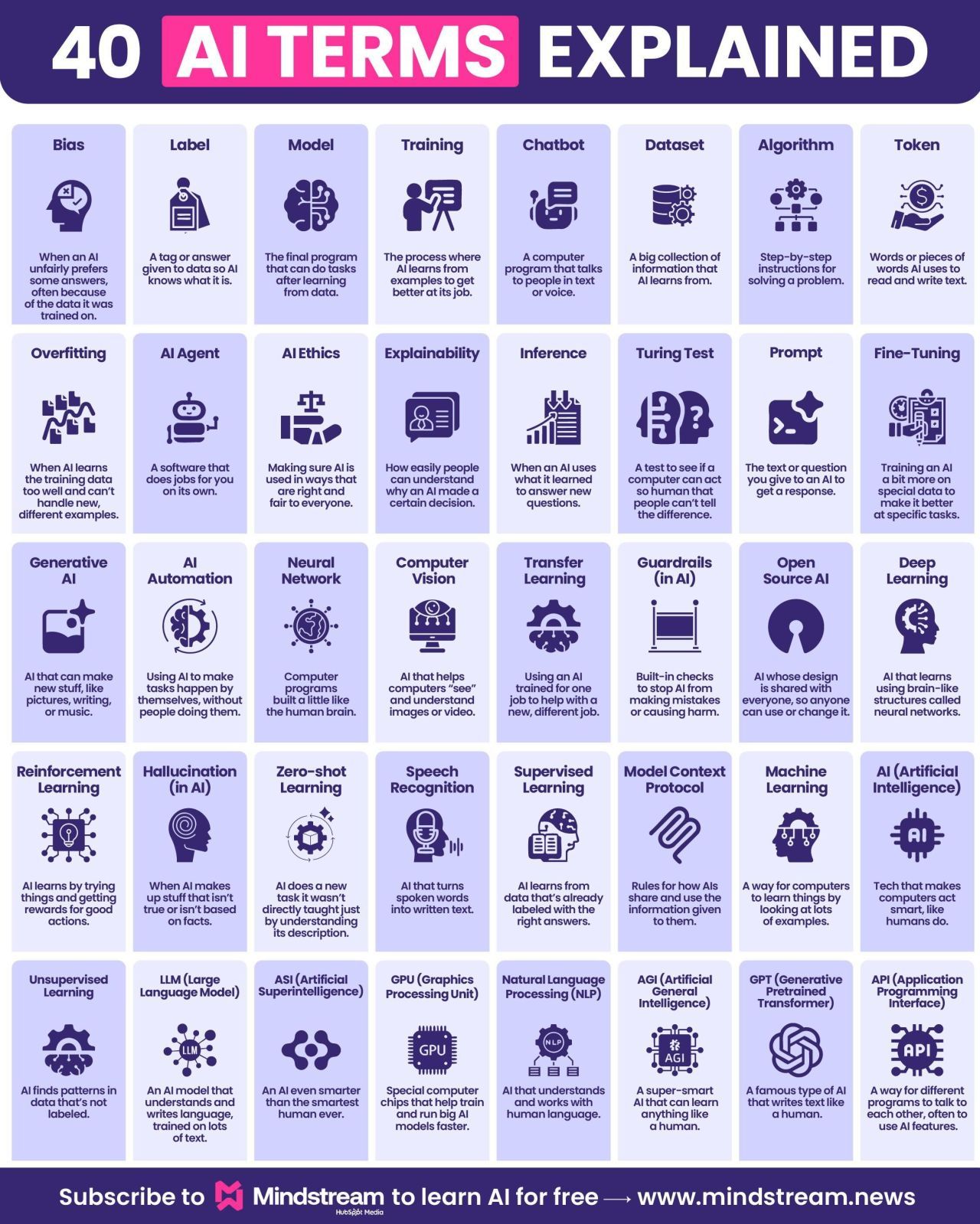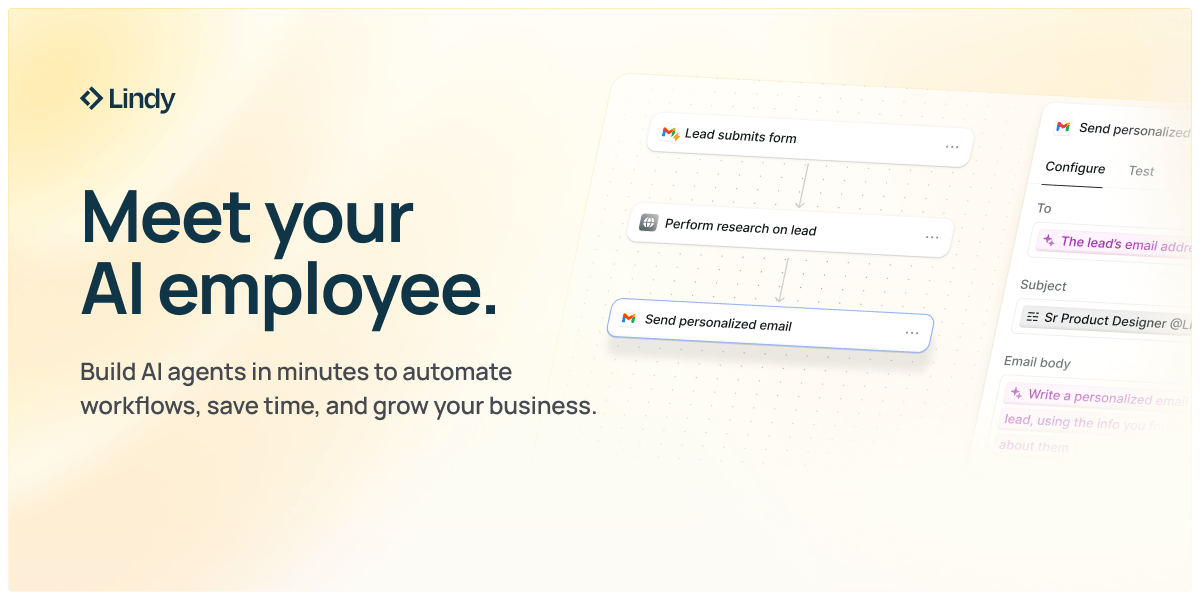- Cyber Corsairs 🏴☠️ AI Productivity Newsletter
- Posts
- 🏴☠️ Simple AI Glossary
🏴☠️ Simple AI Glossary
Key Terms Explained
Quick test: define “token” without using the word “word.” Stuck? This glossary makes “model,” “training,” and “bias” simple enough to explain to your aunt. Give yourself a fast upgrade before your next AI chat.
Introducing the first AI-native CRM
Connect your email, and you’ll instantly get a CRM with enriched customer insights and a platform that grows with your business.
With AI at the core, Attio lets you:
Prospect and route leads with research agents
Get real-time insights during customer calls
Build powerful automations for your complex workflows
Join industry leaders like Granola, Taskrabbit, Flatfile and more.
Knowing the basic language of AI is absolutely non-negotiable in 2024. I’ve been in meetings where terms like “overfitting” and “token” are thrown around, and it’s easy to just nod along without really getting it.
That’s why I was so relieved to find this super simple glossary. This LinkedIn creator boiled down some of the most common AI terms into plain English, making them accessible to everyone. It’s an awesome starting point if you’re trying to get up to speed.
The mind behind it argues that you can’t get left behind, and understanding the vocabulary is the very first step. I totally agree. Once you know what these words mean, the entire field of AI becomes much less intimidating.
Here are three of my favorite definitions from the post:
Model: This is the final AI program that gets the job done. Think of it as the “graduate” that has finished its studies and is ready to work on new tasks.
Training: This is the learning process. It’s how an AI model studies tons of examples (the dataset) to get better and better at what it does.
Token: These are the building blocks of language for an AI. Instead of seeing whole words, the AI often breaks text down into words or even pieces of words called tokens to process and generate language.
Here are a few more essentials the post’s author covers:
Bias: When an AI has an unfair preference for certain outcomes, usually because of skewed data it learned from.
Dataset: The huge collection of information, like text, images, or numbers, that an AI uses for training.
Overfitting: A classic mistake! This happens when an AI memorizes its training data too perfectly and then struggles when it sees new, unseen information.
AI Ethics: The crucial field focused on making sure AI is developed and used in a fair, safe, and morally responsible way.
The Simplest Way To Create and Launch AI Agents
Imagine if ChatGPT, Zapier, and Webflow all had a baby. That's Lindy.
With Lindy, you can build AI agents and apps in minutes simply by describing what you want in plain English.
From inbound lead qualification to AI-powered customer support and full-blown apps, Lindy has hundreds of agents that are ready to work for you 24/7/365.
Stop doing repetitive tasks manually. Let Lindy automate workflows, save time, and grow your business.
*Ad
Other awesome AI guides you may enjoy

Credit to Adam Biddlecombe
This is just a sample of the full glossary this innovator shared. To get the definitions for all 40 terms, go check out the original post and its helpful infographic!
Master Marketing Measurement with Incrementality
Still guessing which marketing tactics actually drive sales? This free guide shows how leading DTC brands use incrementality to cut waste and scale smarter. Learn how to measure true impact, optimize your budget, and move beyond outdated attribution. Download now and start making data-backed decisions that fuel real growth.
*Ad



